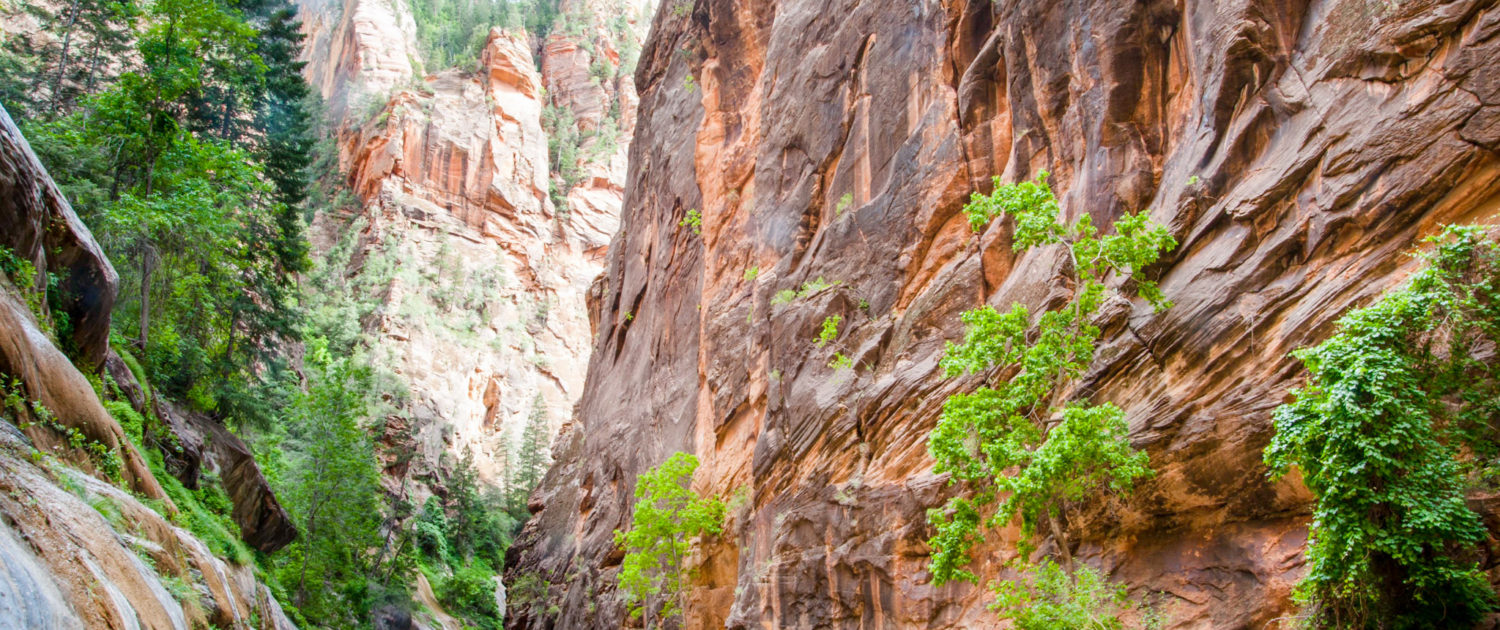Alongside a heavily traveled trail in the woods near Sun Valley, Idaho, stands a pine, distinctive from all around it. It represents a unique life lived in spite of similar circumstances to its sister pines. By trunk width, it is one of the largest around, a testament to its ability to survive and endure nature’s challenges. Shorter than many of its peers, it has compensated by the breadth of its canopy. Upon closer glance it is discovered that five distinct trunks have formed about 10 feet above the ground. Enormous masses initially entangled in confusion, these trunks protrude horizontally at first, then all five abruptly advance vertically toward the sky. Deep within the center of the entanglement stands what is left of the original trunk, a trunk that is now withered, gray, cracked, and dead.
Conifers such as this normally grow a canopy in direct proportion to their tap root, a mirror image to the height of the growth above. So what happened, I wonder, so many years ago that nearly terminated this tree’s existence? Was there one single event that was so profound that it radically changed its genetic nature? It appears that shortly after this fundamental event, a choice was presented for the pine to either adapt and grow, or to wither and die. Somehow this mighty pine found the determination to survive. Slow at first, but with increasing momentum until now, it stands as a testament to those sensitive enough to see it for what it is: a monument of courage in the midst of catastrophe. Surely it would have been easier to give up, shrivel, and die. This path of acquiescence would have been justified, given the magnitude of the incident and the probability of failure. At best, the pine would be different. Why continue when original objectives and dreams were now beyond reach? What transpired in its course to carry on in defiance of the challenges? What was the source of courage inspiring this pine to become the best it could be in spite of this hardship? What sustained it in the early stages of growth, when just surviving required all the energy available?
So here it stands as a testament to all who have an eye to see. Its beauty lies not in statistics, but in majesty and uniqueness. This pine truly grew to become “one of a kind.” Courage to adapt and grow in the face of challenge is a personal choice.
Aristotle suggested that we become brave by doing brave acts. The brave person is not one who has never been afraid but in reality someone who develops the courage to manage fear.
Courage and cowardice are both about commitment or the lack of it. Regarding courage, a decision is made prior to a challenging event to be strong and proactive in the face of adversity whereas cowardice lacks this prior commitment. The moment of choice underlying courage is this personal resolve. It occurs before the challenge through a pre-determined personal pledge, so that when confronted with trials or obstacles, fear and vulnerability can be neutralized. Courage is a social behavior that comes from facing fears and challenges openly. Cowardice, on the other hand, is a lack of robustness or internal strength when confronted with danger or dread. Cowardice is weakness of character due to a non-committed nature. Without principles, values, or standards, cowardly people are unable to resist opposition.
Courage is a predetermined commitment to resist unhealthy impulses and control reactions in challenging situations. It is in direct opposition to fear driven cowardice. Cowardice begins as caution and is about safety. Cowardice is weakness towards commitment. It is fear arising from perceived vulnerability to self or others. Unresolved, the natural reaction to threat is avoidance and flight. Cowardice is self-centered and pain avoidant where self-concern overrides the “right” action in the time of need. It is a failure of personal character in the face of challenge.
Courage is all about delaying gratification of the present. It is a predetermined commitment to stand for something. It is about sacrifice, whereas cowardice is succumbing to the pressures of the moment. Courage is bravery, fortitude, strength, valor, and gallantry.
When challenged, three types of courage can emerge: physical, emotional, and moral. Physical courage is the ability to confront and endure fear and pain, as well as to risk when confronted with hardship or threat of death. Emotional courage deals directly with fear and the imaginings of the mind. Moral courage is the ability to act appropriately in the face of temptation, opposition, shame, scandal, or discouragement. Courage is derived from love: love of something or someone beyond self. It originates in the mind.
The act of “taking a stand” by nature is uncomfortable and threatening. Courage flows from the drive to stand up to something that is deemed unjust, evil, or against personal standards. Regardless of the source of the opposition, it is the mind that determines the need to take a stand. As the contest of wills escalates, the risk also exponentially increases. The stakes become high and the determination to hold to original beliefs is challenged again and again until one’s position either folds or advances. The greater the physical opposition the easier it is to convince the mind that it is unwise to take a stand. Courage can be exerted towards self, as well as towards others.
None of us are actually born courageous, but we are all born with potential. Courage is something we must practice. Courage is the foundation of integrity. It is not simply one of the standards, but it is the strength behind every virtue at its testing point. Mark Twain said it well: “Courage is resistance to fear, mastery of fear, but not absence of fear.”
Courage is developed by:
- Pre-determining responses for specific situations. By establishing and practicing ethical responses before they are faced, we empower ourselves to resist the easy path when the pressure is on.
- Writing down daily goals that are manageable and measurable. Knowing exactly what is to be accomplished maintains motivation as well as commitment in the heat of the moment.
- Practicing patience and flexibility when setbacks are experienced. Diversions often occur when the wrong strategy is being used.
- Keeping the vision and learning from experiences when delays and failures are encountered.



